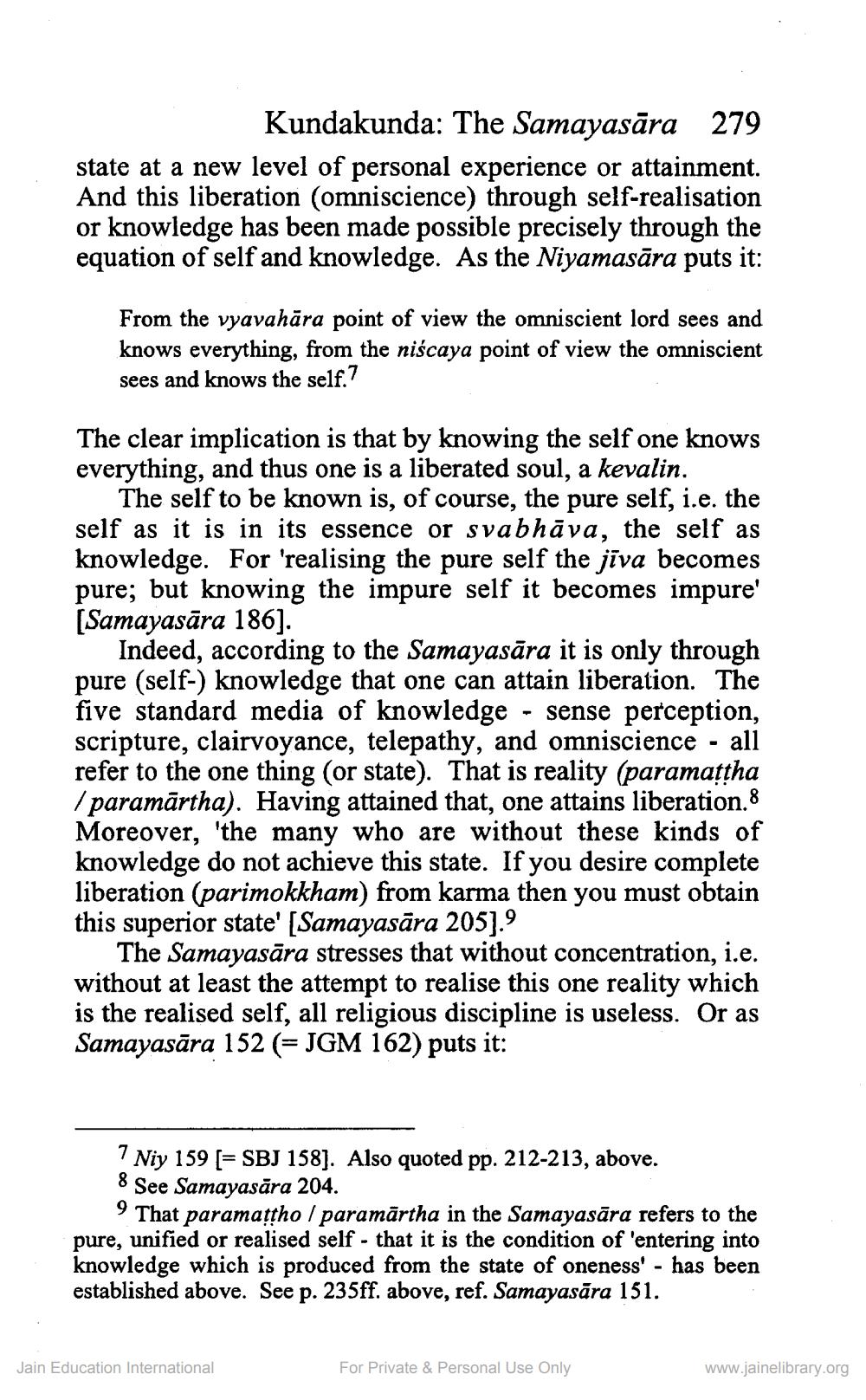________________
Kundakunda: The Samayasāra 279 state at a new level of personal experience or attainment. And this liberation (omniscience) through self-realisation or knowledge has been made possible precisely through the equation of self and knowledge. As the Niyamasāra puts it:
From the vyavahāra point of view the omniscient lord sees and knows everything, from the niscaya point of view the omniscient sees and knows the self.7
The clear implication is that by knowing the self one knows everything, and thus one is a liberated soul, a kevalin.
The self to be known is, of course, the pure self, i.e. the self as it is in its essence or svabhāva, the self as knowledge. For 'realising the pure self the jīva becomes pure; but knowing the impure self it becomes impure' [Samayasāra 186).
Indeed, according to the Samayasāra it is only through pure (self-) knowledge that one can attain liberation. The five standard media of knowledge - sense perception, scripture, clairvoyance, telepathy, and omniscience - all refer to the one thing (or state). That is reality (paramattha
paramārtha). Having attained that, one attains liberation.8 Moreover, the many who are without these kinds of knowledge do not achieve this state. If you desire complete liberation (parimokkham) from karma then you must obtain this superior state' (Samayasāra 205].9
The Samayasāra stresses that without concentration, i.e. without at least the attempt to realise this one reality which is the realised self, all religious discipline is useless. Or as Samayasāra 152 (= JGM 162) puts it:
7 Niy 159 (= SBJ 158). Also quoted pp. 212-213, above. 8 See Samayasāra 204.
9 That paramatho / paramārtha in the Samayasāra refers to the pure, unified or realised self - that it is the condition of 'entering into knowledge which is produced from the state of oneness' - has been established above. See p. 235ff. above, ref. Samayasāra 151.
Jain Education International
For Private & Personal Use Only
www.jainelibrary.org




